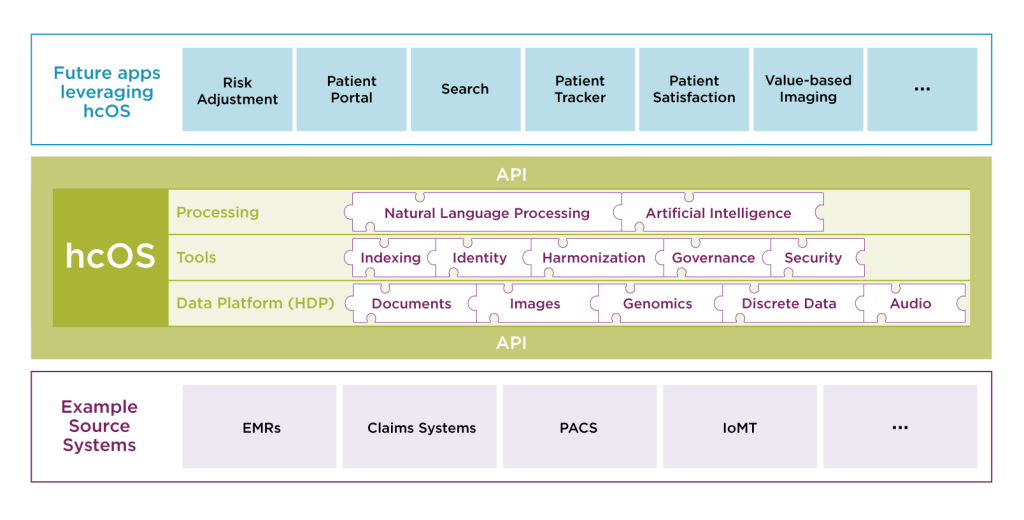The project is focused on breaking down data silos in health care
A major initiative at UPMC Enterprises to build a cloud-based health care platform is advancing as several parts of the platform marked development milestones recently. Referred to as the health care operating system, or hcOS, the platform is designed to overcome the problem of data silos in health care.
Also, Health Data Management and HIT Infrastructure published stories on hcOS in March, describing UPMC Enterprises’ work to make data from multiple sources available to providers, payers, and app developers.
The publications quoted multiple people at Enterprises.
Tal Heppenstall, President of UPMC Enterprises, told HIT Infrastructure: “The IT problem we are trying to solve is interoperability. We are trying to access all of the health care data that can solve health care problems for health care participants in a way that makes it easy for them to access the data.”
Rob Hartman, Senior Manager of Business Development, described the multiple components of hcOS and the key role of APIs to Health Data Management, which reported that UPMC has filed a trademark registration for hcOS.
Three-layer ‘data-cake’

In the article, Hartman described hcOS as a three-layer “data-cake” wrapped in APIs as a useful reference point. The base-layer of the cake ingests data from various clinical and payer systems. The middle layer is a set of standard tools that handle things like governance, security, identity management, privacy, harmonization and indexing. The third layer is the processing layer where natural language processing and artificial intelligence are applied to the data, wrapped in APIs to be served to the owned or third-party applications supporting various end users.
Hartman contends that APIs figure prominently in the hcOS strategy at UPMC Enterprises “so that innovators — whether they’re internal or external — don’t have to struggle with data challenges and can innovate more quickly.” He added that the UPMC Enterprises’ hcOS solution is built on the Health Level 7 Fast Healthcare Interoperability Resources (FHIR) standard.
Health Data Management also quoted Rebecca Jacobson, Vice President of Analytics. “The goal is to develop new, innovative methods with ML and NLP and to turn those into products that impact health care and patients. I think we’ve done something extremely innovative in creating this (hcOS) platform.”
Search function in production
Meanwhile, a search function of hcOS is in production, enabling users to access patient data from electronic medical record sources such as Epic and Cerner and search across millions of patient records and clinical documents to perform broad general discovery and create patient cohorts. The search function allows users to perform advanced query capabilities, which can be used to increase efficiency, reduce costs, and support new research and quality efforts.
And a key component of the search function is an indexing feature that creates a searchable index of nearly 200 million clinical notes and nearly 9.5 million images in the hcOS data platform. Thanks to a performance update, queries that previously required minutes to complete are now taking just a few seconds.
“Search is a key application providing customer-facing functionality for hcOS,” said Tara Williams, Product Manager with UPMC Enterprises. At UPMC, the functionality is being used across the health system landscape in provider, payer, and research settings in multiple small-scale pilots related to research and quality measurement.
“It is anticipated to be a compelling driver for hcOS platform adoption as a data-driven platform should provide a robust, powerful search component,” Williams said.
Work on many other components of hcOS is also advancing. Learn more about the platform, its components, and UPMC’s goal of fostering an ecosystem of third-party apps for health care on the Enterprises website.



